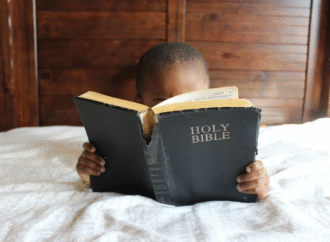Simple, timeless, and unpretentious, “A Charlie Brown Christmas Special” became a holiday tradition since its first airing on Dec. 9, 1965. Its beginnings were simple: a television producer approached cartoonist Charles Schulz with a general idea for an animated special featuring the Peanuts gang. Soon, the idea for a Christmas special, written by Schulz himself, became a mission for the man. Having seen the commercialization of the Christmas holidays, Schulz decided to focus his project on the true meaning of Christmas: Christ. When asked why, he responded, “If we don’t do it, who will?”
What was it that drove him to relentlessly invest his time and talents in this project? Perhaps he was compelled by the events he saw unfolding on the national stage.
In 1951, the New York State Board of Regents approved a nondenominational prayer that was to be recited at the beginning of each school day. It read, “Almighty God, we acknowledge our dependence upon Thee, and we beg Thy blessings upon us, our parents, our teachers and our Country.” The purpose of this 22-word prayer, according to the Regents, was partially to encourage the development of good, law-abiding citizens. Participation in the prayer was voluntary.
After almost a decade later, some parents said the prayer violated the Establishment Clause of the First Amendment by establishing a state-imposed religion. However, the New York State Supreme Court upheld the legality of the prayer. This ruling was appealed, and the appellate court said, “The state is not imposing a religious belief by using this prayer.” This ruling was also appealed, and the New York Court of Appeals agreed with the other two courts, stating, “There was a sufficient separation of church and state so that the First Amendment was not infringed.”
The case then was appealed to the U.S. Supreme Court, and in 1962, the Engel v. Vitale decision held that the lower three courts had been wrong: The prayer did indeed violate the Establishment Clause. The majority did not cite a single Supreme Court case in its opinion (except in a footnote) and overturned more than 200 years of public-school practice.
The dissent argued that the Establishment Clause of the First Amendment was designed to prohibit the establishment of a state-sponsored church, not to prohibit government involvement with religion. It said that the majority decision denied schoolchildren “the opportunity of sharing in the spiritual heritage of our Nation” and noted numerous instances of religion in the public square, such as “In God We Trust” on money or “God Save This Honorable Court” at the opening of Supreme Court sessions.
Engel v. Vitale was the beginning of a series of like-minded decisions. The next year, in Abingdon v. Schempp, the same court ruled that Bible readings and recitations of the Lord’s Prayer likewise violated the Establishment Clause.
It was in this precedent-upsetting milieu that Charles Schultz wrote the script for “A Charlie Brown Christmas.”
Linus, in the climax of the show, recites Luke 2:8-14. When he comes to the phrase “Fear not,” he drops his blanket. What a poignant symbol of reliance on God! Casting away his dependence, he shows that his true security is in faith, not in things.
In these secular times, “A Charlie Brown Christmas” might be the only way some children will learn the true meaning of Christmas:
“And there were in the same country shepherds abiding in the field, keeping watch over their flock by night. And, lo, the angel of the Lord came upon them, and the glory of the Lord shone round about them: and they were sore afraid. And the angel said unto them, ‘Fear not: for, behold, I bring you good tidings of great joy, which shall be to all people. For unto you is born this day in the city of David a Savior, which is Christ the Lord. And this shall be a sign unto you; Ye shall find the babe wrapped in swaddling clothes, lying in a manger.’ And suddenly there was with the angel a multitude of the heavenly host praising God, and saying, ‘Glory to God in the highest, and on earth peace, good will toward men.’”
Linus concludes his recitation by saying, “That’s what Christmas is all about, Charlie Brown.”
It sometimes takes time for cultural changes wrought by the Supreme Court to trickle down to actual practice. For example, a look at the beliefs of public-school administrators over time demonstrates how these Supreme Court rulings impacted the goals of public schools. The National Association of Secondary Schools Principals (NASSP), which polled middle and high school administrators in 1966, found that the development of “moral and spiritual values” was the second most important task of public schools, ranking only after the acquisition of basic skills (reading, writing, math). By 1992, it was at the bottom of the list.
Thus, in our recent past, school officials recognized the importance of instilling common values and a common heritage. So, apparently, did the entertainment industry. In 1966, “A Charlie Brown Christmas” received the Emmy for Outstanding Children’s Program.
Most Americans do not realize that Linus’ recitation of the nativity narrative takes place on a public-school stage and likewise do not recall a time when prayer, Christmas pageants, and Bible readings were allowed in public schools. It’s time we remind them.
“If we don’t do it, who will?”
—
A version of this article was published at Intellectual Takeout in December 2020.
Image credit: Flickr-22860, CC BY-SA 2.0
2 comments















2 Comments
2flathat
December 23, 2022, 2:11 amJust bought this on DVD today at the discount store. I thought I should buy it before it is removed permently for being politically incorrect and offensive.
REPLYJay
December 24, 2022, 4:25 amIt was wrong in the Peanuts Christmas special and it’s still wrong here. The quote from the Gospel of Luke is : “Glory to God in the highest; and on earth peace to men of good will.” – that is all- Merry Christmas:)
REPLY